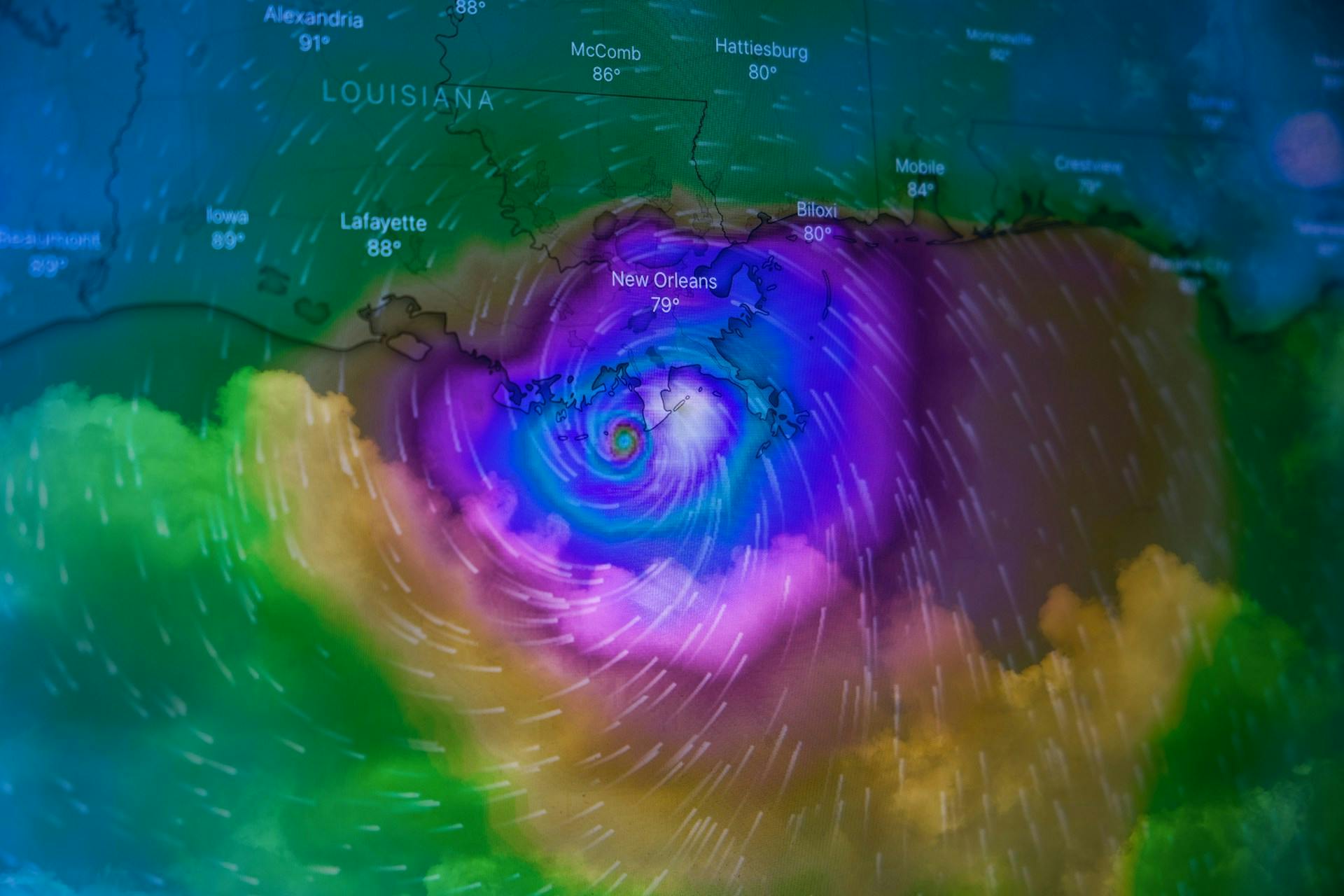Employee Safety During Disasters: Communication Tips for HR


When natural disasters strike, ensuring employee safety becomes a challenge, especially for deskless workers who face unique vulnerabilities that office-based employees don't encounter.
The Occupational Safety and Health Administration (OSHA) defines a workplace emergency as "a sudden unforeseen crisis, usually involving danger, which requires immediate action"—but for deskless workers, these emergencies create extra challenges due to their scattered locations and limited connection to central operations.
Traditional emergency communication methods like intercoms, PA systems, and company emails often miss field workers, delivery personnel, or those in remote locations. As an HR professional responsible for employee safety in natural disasters, your emergency planning must address the specific needs of deskless workers with appropriate communications systems and transportation solutions that function during crisis situations.
Developing a Multi-Channel Emergency Communication Strategy for Natural Disasters
When natural disasters occur, communication systems often fail right when you need them most. That's why you need a multi-channel emergency communication strategy that works even without internet access. Let's explore how to build redundancy into your emergency communications and prepare message templates for quick deployment to enhance employee safety in natural disasters.
Emergency Communication Systems
An effective emergency communications plan needs multiple channels to ensure messages reach everyone no matter what happens. While digital methods work well in normal times, they can disappear during power outages or infrastructure damage.
Implementing an employee notification system that allows for real-time communication can significantly enhance your ability to reach employees quickly. Here are some backup communication methods to consider:
- Traditional landline call trees: Critical when internet or cellular services go down
- Portable radios and walkie-talkie systems: Allow for direct on-site communication
- Satellite phones: Work independently of local infrastructure
- HAM radios: Valuable for long-distance communication when other systems fail
- Human messengers or "runners": The oldest but sometimes most reliable method
- SMS/text messaging: Requires less bandwidth than voice calls; more likely to work during network congestion
SMS messaging deserves special attention in your strategy. Text messages typically need less bandwidth than voice calls, making them more likely to go through during network congestion.
They're also more accessible to people with hearing impairments and provide a written record for later reference. Implementing an emergency notification system that utilizes SMS for urgent alerts ensures rapid communication with your deskless workforce during critical situations.
Creating Message Templates and Pre-Scripting Communications
During emergencies, there's no time to craft perfect messages. Pre-scripted templates ensure you can quickly share clear, actionable information. Crisis teams should develop message templates customized for each communication channel and stakeholder group.
Effective message templates should include:
- Nature of the emergency
- Relevant dates and timing information
- Affected locations
- Specific action steps for recipients
- Contact information for additional assistance
Here's an example template for a wildfire evacuation alert:
EMERGENCY ALERT: MANDATORY EVACUATION
Date/Time: [Insert date and time]
Areas Affected: [Specific neighborhoods/regions]
Situation: Fast-moving wildfire approaching residential areas
Required Actions:
- Evacuate immediately to [designated evacuation center]
- Take emergency kit, medications, and important documents
- Follow [specified evacuation routes]
- Text SAFE to [number] when you've reached safety
Updates: [Website/radio frequency/phone number]
Preparing these messages in advance with templates ready for various scenarios ensures timely and appropriate communication during emergencies when every minute counts.
Location-Specific Evacuation and Safety Protocols
When it comes to employee safety in natural disasters, one size doesn't fit all. The evacuation procedures that work for a high-rise building during an earthquake won't help a construction site in a flood zone. Here's how to develop protocols that address your specific location risks.
Customizing Protocols
Any effective evacuation plan starts with understanding your site's unique layout, exit points, and potential obstacles. Try walking through your facility and finding the clearest, most direct routes to safety. You should identify at least two evacuation routes for each area and mark them clearly with appropriate signage.
Your protocols should account for:
- Geographic-specific hazards (floods, earthquakes, hurricanes, wildfires)
- Building layout and potential bottlenecks during evacuation
- Industry-specific risks (chemical storage, heavy machinery, etc.)
- Accessibility requirements for employees with disabilities
For example, California State University San Marcos has designated three major evacuation arteries (Twin Oaks Valley Road, Barham Drive, and La Moree Road), plus a service road to manage traffic flow from specific parking lots. This kind of planning considers campus layout and traffic patterns to ensure orderly evacuation.
Your emergency action plan (EAP) must clearly outline:
- Specific conditions that trigger evacuation
- Designated safe areas for immediate protection
- Chain of command for authorizing evacuations
- Shutdown procedures for critical operations
- Assembly points for headcounts after evacuation
For individuals with disabilities, protocols need additional customization. Encourage self-identification of special needs and establish a buddy system to ensure no one gets left behind. Your plan should include alternatives like shelter-in-place options, evacuation chairs, or two-person carry methods when appropriate.
Trainings and Drills
Creating a detailed plan is just the beginning. Regular training and practice drills make sure everyone knows what to do when an emergency happens.
According to OSHA requirements, your training should include:
- Assigning specific leadership roles to designated employees who will assist in evacuations
- Training all workers on their specific responsibilities during an emergency
- Ensuring everyone knows how to contact emergency responders
- Practicing procedures for shutting down utilities and equipment
- Conducting headcounts at assembly areas
Run evacuation drills at least quarterly, varying the scenarios to prepare for different types of emergencies. After each drill, gather feedback and refine your protocols. This continuous improvement process helps identify bottlenecks or confusion points before a real emergency occurs.
For maximum effectiveness, invite local emergency response personnel to join your training exercises. Their expertise can help refine your protocols and build valuable relationships that will be valuable during an actual emergency.
Remember that knowing evacuation routes and procedures before an emergency is important. Encourage employees to learn multiple evacuation paths and understand the location of emergency equipment ahead of time. This preparation significantly increases the chances of a successful evacuation when seconds count.
Legal Obligations and Compliance Requirements During Natural Disasters
During natural disasters, your legal obligations as an employer don't disappear—they often become more complicated. Understanding these responsibilities is necessary to protect your business and your employees during emergencies.
Overview of Employer Responsibilities
During disasters, you're still bound by federal regulations that protect worker safety and rights:
Occupational Safety and Health Act (OSHA): As an employer, you must maintain a workplace free from recognized hazards. This becomes even more important during natural disasters when normal working conditions change.
OSHA allows employees to refuse work when they have a reasonable, good-faith belief that working conditions are unsafe. Be cautious about requiring deskless workers to report during emergencies—forcing employees to work in dangerous conditions could create significant liability.
You should understand that you may be legally responsible for injuries or fatalities that occur to employees while working if those incidents are caused by intentional or grossly negligent conduct on your part.
Americans with Disabilities Act (ADA): After disasters, you may see more requests for accommodations under the ADA. Both physical and mental injuries resulting from natural disasters can qualify for reasonable accommodations in the workplace.
Managing Employee Leave and Accommodations
The Family and Medical Leave Act (FMLA) creates specific obligations you must follow:
- FMLA requires employers with at least 50 employees to provide unpaid leave to employees who cannot perform their jobs due to a serious health condition, which can include physical or mental illness, injury, or impairment resulting from a disaster.
- This also applies when employees need to care for a spouse, child, or parent with a serious health condition.
- Worth noting: periods when business activities are suspended and employees are not required to report for duty cannot count against the 12-week FMLA entitlement.
- You should treat FMLA-qualifying employees as you would any other employee in similar job classifications—if some employees can telecommute during a disaster, the same opportunity should be extended to those on FMLA leave.
While you can discipline at-will employees who refuse to report to work without a legal justification, know that some state and local laws offer specific protections for employees under mandatory evacuation orders.
To best manage these legal requirements, you should:
- Create a comprehensive emergency action plan before disasters occur
- Develop clear policies for leave and accommodations during emergencies
- Document all safety measures taken during disaster response
- Consider flexible work arrangements where possible
- Maintain open communication about expectations and employee rights
Effective communication, such as using SMS for rapid alerts, is important to keep employees informed of their rights and responsibilities during emergencies. A proactive approach to compliance reduces legal risk and helps maintain employee trust during challenging circumstances.
Supporting Employee Mental Health During Natural Disasters
During and after natural disasters, employee mental health support becomes necessary. The World Health Organization (WHO) reports that about one in five people (22%) who experience conflict or disaster develop conditions like depression, anxiety, or PTSD. Without proper support, these issues can seriously impact both personal recovery and workplace productivity.
Resources and Strategies
To support employee mental health during crisis situations, consider implementing these resources:
- Psychological First Aid: Offer immediate emotional support through qualified counselors after traumatic events. This early intervention helps process experiences and prevents long-term mental health impacts.
- Comprehensive Counseling Services: Give employees access to professional mental health services through an Employee and Family Assistance Program (EFAP). Review your EFAP regularly to optimize mental health support and make sure employees know about these resources.
- Safe Spaces: Create a "safe room" where employees can decompress when feeling overwhelmed. Ensure managers actively support using these spaces without judgment.
- Digital Resources: Share mental health apps and online tools that provide coping strategies and self-help resources. Many effective mental health apps can support employees between counseling sessions.
- Educational Materials: Share information about common reactions to traumatic events and available support. These materials help normalize the range of responses employees might experience.
- Multilingual Emergency Alerts: Providing multilingual emergency alerts ensures all employees receive important information in a language they understand, reducing confusion and anxiety during crises.
Role of Supervisors
Supervisors play an important role in supporting employee mental health during crises:
- Trauma-Informed Response: Train supervisors to recognize signs of distress and respond appropriately. Leaders should understand that each employee processes trauma differently and avoid forcing discussions about traumatic experiences.
- Effective Communication: Teach supervisors techniques for communicating with emotional employees in a supportive way. Ask specific questions like "How are you doing today?" to help employees express their current state.
- Regular Check-ins: Have supervisors conduct consistent, personalized check-ins with team members, especially those who have experienced trauma. These check-ins should focus on support rather than performance.
- Flexible Accommodations: Allow supervisors to offer flexible work arrangements for employees experiencing distress, such as modified schedules, temporary workload adjustments, or working-from-home options.
- Protection from External Pressures: During public-facing disasters, supervisors should shield employees from media scrutiny or public pressure, using organizational resources to maintain a protective environment.
Employees should also know their rights regarding mental health conditions in the workplace, including accommodations and protections against discrimination. Resources like Depression, PTSD, and other mental health conditions in the workplace provide important information about these legal protections.
Best Practices for Tracking Employee Safety in Natural Disasters
Effective employee safety tracking systems are necessary for maintaining workplace safety, especially during emergencies and disasters. From wellness checks to using technology for enhanced monitoring, these practices help ensure all employees remain safe and accounted for when crisis strikes.
Employee Wellness Checks
When disasters happen, categorize your employees based on their impact level to provide appropriate support:
- Severely Affected Employees: Those who have lost family members or homes, or are dealing with severe illness
- Moderately Affected Employees: Individuals facing issues like energy supply loss or transportation failures
- Unaffected Employees: Those not directly impacted by the emergency
For each group, develop tailored policies addressing their specific needs during and after emergencies. Regular wellness checks become a part of your response, allowing you to:
- Verify employees' physical safety
- Assess their mental well-being
- Identify and address specific needs that arise
During these checks, remember that natural disasters significantly impact mental health. Proactively check on your team members, ensuring their personal needs are met and that they feel supported. Where available, offer counseling services to support employees' mental health during recovery.
Utilizing Technology for Safety Tracking
Modern technology offers powerful tools to enhance your safety tracking efforts. Implementing a mass notification system that addresses each employee's specific communication needs is essential for workplace safety during emergencies.
An effective mass notification system enables:
- Real-time communication with all employees regardless of location
- Multi-channel alerts (text, email, voice calls, desktop alerts)
- Team discussions during crisis situations
- Role-based access control for targeted messaging
These systems help with natural disasters and other life-threatening situations. According to the Bureau of Labor Statistics, there were 761 cases of intentional injury leading to death in 2019, and research shows an average of 51 individuals died from mass shootings per year from 2010 to 2019.
To enhance emergency response, consider implementing:
- Two-way messaging capabilities that allow employees to report their status
- Emergency buttons that connect stakeholders directly to emergency services
- Preset alert templates containing information like emergency type, location, and required actions
- Implementing an SMS alert system ensures critical messages reach employees quickly during emergencies, enhancing safety tracking
- Utilizing reliable SMS platforms to ensure messages are delivered promptly and efficiently during critical times
When implementing these technologies, consider privacy concerns. Ensure your safety tracking systems comply with relevant regulations like The Health Insurance Portability and Accountability Act (HIPAA) and protect sensitive employee information. Create clear policies about what data is collected, how it's stored, who has access to it, and how long it's kept.
Balancing robust safety tracking with privacy protections creates a system that keeps employees safe while respecting their personal information—building trust in your emergency management protocols.
Preparing Supervisors and Team Leads as Emergency Coordinators
As you build comprehensive emergency management strategies, establishing clear roles for supervisors and team leads who will serve as emergency coordinators during crises is necessary. These individuals form the backbone of your organization's emergency response and need specific preparation to effectively fulfill their responsibilities, ensuring employee safety in natural disasters.
Roles and Responsibilities
Supervisors designated as Emergency Coordinators (ECs) have two distinct sets of responsibilities:
Non-Emergency Responsibilities:
- Share, implement, and regularly update the Emergency Action Plan (EAP)
- Conduct annual reviews, ensuring all personnel are assigned to relevant roles
- Plan and execute emergency drills to optimize response protocols
- Document After Action Reviews following emergencies and share findings with leadership
- Maintain current emergency escape procedures, operational requirements, and personnel accountability systems
Emergency Response Duties:
- Oversee Floor Captains to ensure proper evacuation procedures are followed
- Coordinate orderly evacuation and maintain personnel accountability
- Provide Emergency Response teams with facility information
- Communicate with Building Management about unaccounted personnel
Supervisors often need to serve as Floor Captains (FCs) who direct personnel during evacuations and confirm personnel presence at Assembly Areas, or as Aides for Persons with Disabilities (APDs) who assist individuals needing support during emergencies.
Training and Empowerment
Effectively preparing supervisors for these roles requires a comprehensive training approach:
- Self-Awareness Development: Help leaders explore their own tolerance for stress to better recognize when team members are exceeding their capacity and need support.
- Decision-Making Clarity: Provide supervisors with clear procedures and decision-making boundaries for challenging situations. When employees understand expectations and know when to seek help, they experience less stress during moments.
- Communication Skills: Hold weekly meetings to discuss challenging issues, ensuring that communication channels are already open if traumatic events occur.
- Crisis Response Training: Provide specific training on effective approaches for responding to workplace distress.
- Emotional Intelligence Development: Invest in emotional intelligence training for supervisors to enhance their ability to support staff during high-stress situations.
- Trauma-Informed Leadership: Train supervisors to understand various trauma reactions and appropriate support strategies while avoiding blame and shame, which can worsen distress.
- Simulation Exercises: Conduct regular drills and scenario-based training to prepare supervisors for various emergency situations, from angry client interactions to full evacuation procedures.
Properly preparing supervisors as emergency coordinators creates a resilient leadership structure that can effectively guide employees through crises while maintaining operational continuity and supporting psychological well-being.
Industry-Specific Considerations for Employee Safety in Natural Disasters
Different industries face unique safety challenges that require tailored approaches to protect workers effectively during natural disasters. Understanding these industry-specific risks and implementing appropriate safety protocols can make the difference between a safe workplace and one prone to accidents and injuries.
Tailored Safety Measures
The construction industry faces particularly high risks related to falls. OSHA mandates fall protection at specific elevations that vary by industry: 4 feet in general industry, 5 feet in shipyards, 6 feet in the construction industry, and 8 feet in longshoring operations.
Fall protection is required whenever employees work above dangerous equipment, regardless of height. To address these risks, the OSHA Fall Prevention Campaign focuses on educating workers about fall hazards and prevention strategies specifically for ladders, scaffolds, and roofs.
For facilities that handle hazardous materials, substitution is a safety measure when elimination isn't possible. This includes using less dangerous chemical alternatives and breaking tasks into smaller, manageable segments to reduce exposure risks.
Medical facilities face unique concerns regarding workplace violence. In healthcare settings where specific risk factors can be identified, implementing a zero-tolerance policy toward workplace violence is important. This policy should cover all workers, patients, clients, visitors, and contractors who may interact with staff.
Weather-sensitive industries like agriculture, construction, and transportation need specialized severe weather protocols. In 2021 alone, 20 severe weather and natural disaster events occurred in the U.S., highlighting the importance of robust weather safety policies. These industries require early warning systems and clear evacuation procedures tailored to their specific operational contexts.
Implementing effective communication tools for deskless workers ensures that all employees, regardless of their work environment, receive timely and important information during natural disasters.
Implementing Safety Protocols
Effective implementation of safety protocols begins with comprehensive policies that address industry-specific risks. These typically include detailed safety checklists, an emergency alert system, and targeted safety training.
For instance, construction companies have successfully reduced fall incidents with daily toolbox talks focusing on height safety and requiring site-specific fall protection plans before work begins. These plans identify all fall hazards at a particular location and specify the appropriate protective measures.
Manufacturing facilities have effectively addressed machine guarding concerns by implementing lockout/tagout procedures tailored to specific equipment and conducting regular safety audits to ensure compliance.
Organizations in all industries should create an Emergency Action Plan (EAP) that accounts for their specific operational risks. This plan should outline clear responsibilities and actions for all employees during emergencies, both for those on-site and those traveling for work.
The consequences of failing to implement industry-appropriate safety measures can be severe. OSHA penalties start at $14,502 per violation and may increase to $145,027 for willful or repeated violations. Beyond financial penalties, businesses with poor safety records risk being added to the National Council for Occupational Safety and Health "Dirty Dozen" list, damaging their reputation and potentially their ability to secure contracts.
Understanding and addressing industry-specific safety considerations creates safer workplaces that protect employees while also meeting regulatory requirements.
Your Path to Enhanced Employee Safety in Natural Disasters
Effective emergency planning for deskless workers requires proper identification of hazards, resource allocation, and clear communication channels. Your plan should include evacuation procedures, communication protocols, and supervisor training. HR professionals play a fundamental role in planning, training, and policy development.
Traditional communication methods often fail to reach scattered deskless workers during emergencies. Top communication tools for deskless workers, such as SMS-based platforms, can bridge this gap.
Yourco's SMS-based platform reaches your non-desk workforce regardless of location. Unlike email—which frontline workers rarely check—or complicated apps, Yourco's text message solution connects with workers through technology they use daily.
During natural disasters, this direct line enables sending evacuation instructions, checking employee safety status, and coordinating emergency response through simple, reliable text messaging that reaches your entire workforce when it matters most.
Try Yourco for free today or schedule a demo and see the difference the right workplace communication solution can make in your company.


